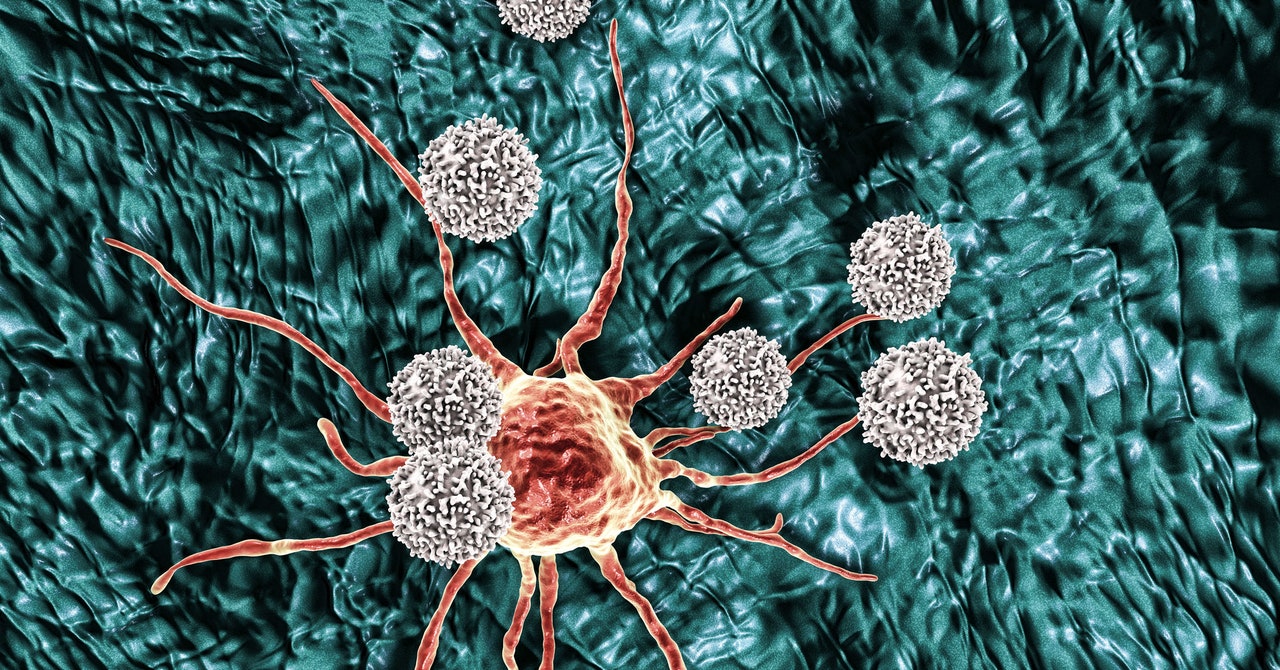
To keep IL-12 inside tumors, scientists at Strand designed a set of instructions called a genetic circuit that tells the mRNA to make the inflammatory protein only when it detects the tumor microenvironment. The circuit is designed to sense levels of microRNA—molecules that naturally regulate gene expression and give off different signatures in cancer cells versus healthy ones. The genetic circuit instructs the mRNA to self-destruct if it goes anywhere other than its intended target.
“We’ve engineered the mRNA so that they turn off if they go to someplace we don’t want them to be,” Becraft says.
Strand is initially targeting easy-to-reach tumors, including melanoma and breast cancer, to prove that the approach works and is safe. In this trial, doctors will inject the mRNA directly into the tumors and then check to see how localized the effect is. In the future, Strand envisions being able to do body-wide infusions of its programmed mRNA to treat tumors in more remote locations. The idea is that the therapy would selectively activate in certain cells and tissues.
Philip Santangelo, an mRNA researcher at the Winship Cancer Institute of Emory University, says there are benefits to Strand’s programmable approach even with injecting it at the site of a tumor. “If the drug goes outside the tumor when you inject it, then at least [its effect] will probably be restricted to the tumor,” he says.
IL-12 can be measured from the blood, so investigators will be able to take a blood draw and make sure the protein isn’t present there. Strand also plans to monitor various organs for the protein to see where it ends up. If the therapy works as intended, they shouldn’t find the protein anywhere outside the tumor.
But like computer circuits, genetic ones can occasionally make mistakes, says Ron Weiss, a professor of biological engineering at MIT who cofounded Strand and now acts as an adviser. “If your genetic circuit makes a mistake one out of 10 times, you do not want to use that as a therapy,” he says. “If it makes a mistake once every million times, that’s pretty good.”
Strand’s trial and other early attempts at these kinds of genetic circuits will see just how well they work. “The notion is that genetic circuits can really have a significant impact on safety and efficacy,” Weiss says.
Weiss pioneered the idea of genetic circuits, the first of which were based on DNA. When Becraft started graduate school in 2013, he joined Weiss’s lab to work on genetic circuits for mRNA. At the time, many scientists still doubted mRNA’s potential.
Now, Weiss imagines being able to use genetic circuits to program increasingly more sophisticated actions to create highly precise therapies. “This begins to really open up the door for creating therapies whose sophistication can match the underlying complexity of biology.”

